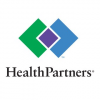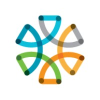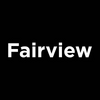Job Description
Park Nicollet Health Services
Job Title : Physician, Fm
Physician, Fm
Job Code : 203-0002
203-0002
Leader Title Level : Supervisor
Supervisor
Location : Various
Various
Department : Various
Various
Final Approval (Dir. or VP Level)
Manager
Date Approved : 01 / 01 / 2016
01 / 01 / 2016
Date Revised : 11 / 29 / 2023
11 / 29 / 2023
POSITION SUMMARY STATEMENT :
Provides health care and treatment of patients within the scope of practice as defined by one’s training and / or Board Certification.
Administers high quality care and service in accordance with Park Nicollet Health Services standards. Models behaviors consistent with group practice and Park Nicollet Health Services values.
MINIMUM QUALIFICATIONS :
Education, Experience or Equivalent Combination :
Graduate of an accredited school of Medicine or Osteopathy
Licensure / Registration / Certification :
Board Certification or eligibility in respective specialty is required of all new hires.
Must maintain current state licensure and DEA certificate.
This position requires credentialing, following the National Committee for Quality Assurance (NCQA) guidelines.
Knowledge, Skills, and Abilities :
Demonstrates knowledge of age-related growth and development principles necessary to provide appropriate service and assure safety of patients.
Proven Proficiency in the operation of the following : Telephone, Dictation Devices, CRT, Personal Computer, Printer and Photocopier.
Proven proficiency in operation of all equipment used in the direct care and treatment of patients in the related specialty.
PREFERRED QUALIFICATIONS :
Education, Experience or Equivalent Combination :
Licensure / Registration / Certification :
Knowledge, Skills, and Abilities :
Strong technical competence, problem solving and interpersonal skills.
ESSENTIAL DUTIES :
40-80%) Provides general patient care involving subjective and objective evaluation, assessment, and formulation of a plan of care.
10-30%) Prescribes or administers treatment as determined by the plan of care.
5-15%) Orders and interprets diagnostic tests to identify and assess patients’ clinical problems and health care needs.
5-15%) Consults with and makes appropriate referral to other health care providers in abnormal or unusual cases.
100%) Maintains the medical record in accordance with PNHS standards.
100%) Recognizes and appropriately responds to medical emergencies.
100%) Serves as patient advocate by maintaining patient confidentiality, protecting patient rights, communicating in a timely manner, and resolving concerns or complaints regarding care and service.
1-10%) Assists in development of new policies, programs, procedures, or techniques in designated department.
1-10%) Participates in research, educational or other special projects as needed.
1-10%) Performs other related tasks.
Job description rankings / percentages are intended to reflect normal averages over an extended period of time, and are subject to daily variances.
Quality and efficiency standards should at no time be compromised to meet the average expectations expressed above. Job descriptions are subject to change to accommodate organization or department needs.
ORGANIZATIONAL EXPECTATIONS :
Values
All colleagues are expected to live our values :
Excellence : We strive for the best results and always look for ways to improve.
Compassion : We care and show empathy and respect for each person.
Partnership : We are strongest when we work together and with those we serve.
Integrity : We are open and honest, and we keep our commitments.
Additional Expectations :
Complies with safety instructions, observe safe work practices, provides input on safety issues, and promotes a safe work environment.
Maintains regular and timely attendance.
Protects confidentiality.
Demonstrates participation in and support of the organization's Corporate Integrity Program by participating in compliance-related education and training and complying with the organization's policies and procedures.
Timely completion of all mandatory education and organizational requirements (., licensure / certification, Employee Health and Wellness requirements, annual training,
POPULATION SPECIFIC COMPETENCIES :
Does this employee have direct patient contact?
Departments will need to determine the appropriate competencies in their areas for their specific patient populations documented in the essential duties section.
Examples of items that can be included are :
Identifies expected outcomes for a plan individualized to the patient or situation specific to the needs of the population served.
Communicates effectively with patients, families, and team members.
Integrates practices that supports patient safety, acknowledges variations in populations served.
Anticipates the needs of the population served as well as the unique characteristics of the communities served.
Anticipates the needs of the population in providing culturally responsive care and develops an individualized plan for patients and families.
LEADERSHIP RESPONSIBILITY :
Please describe the degree to which the position directs the work of others or coordinates workflow of a clinic, department, or functional area.
If applicable, indicate the number of people and the titles for which this position directly and / or indirectly directs the work of others or coordinates workflow.
Dedicates majority of time to providing quality patient care and service. Participates equitably in responsibilities of patient care in designated department.
May provide work direction to medical support and nursing staff in designated work unit.
Critical Job Demands
Section 1 : Place an X’ next to ONE of the terms that best describes the frequency for each of the Critical Demands .
Critical Demands
N / A
Rare
1-5% (Up to a 1 / 2 hour)
Occa
6-33% (1 / 2 hour to 3 hours)
Freq
34-66% (3 to 5½ hours)
Cont
67-100% (5½ to 8 hours)
Standing - Remaining on one's feet in an upright position at a work station without moving about.
Walking - Moving about on foot.
Sitting - Remaining in a seated position.
Squatting - Assuming or maintaining a crouching position with the knees bent.
Reaching - Stretching out or extending to touch or grasp.
Lifting - Raising or lowering an object from one level to another (includes upward pulling).
Carrying - Transporting an object, usually holding it in the hands or arms, or on the shoulder.
Pushing / Pulling Exerting force upon an object so that the object moves away / towards from the force.
Handling / Fingering (includes typing, computer work, gripping, grasping, and pinching)
Section 2 : Place an X next to ONE of the terms that best describes the Strength Rating for this job classification whichis expressed by one of five terms : Sedentary, Light, Medium, Heavy, and Very Heavy.
Sedentary Work - Exerting up to 10 pounds of force occasionally (Occasionally : activity or condition exists up to 1 / 3 of the time) and / or a negligible amount of force frequently (Frequently : activity or condition exists from 1 / 3 to 2 / 3 of the time) to lift, carry, push, pull, or otherwise move objects, including the human body.
Sedentary work involves sitting most of the time, but may involve walking or standing for brief periods of time. Jobs are sedentary if walking and standing are required only occasionally and all other sedentary criteria are met.
Light Work - Exerting up to 20 pounds of force occasionally, and / or up to 10 pounds of force frequently, and / or a negligible amount of force constantly (Constantly : activity or condition exists 2 / 3 or more of the time) to move objects.
Physical demand requirements are in excess of those for Sedentary Work. Even though the weight lifted may be only a negligible amount, a job should be rated Light Work : (1) when it requires walking or standing to a significant degree;
or (2) when it requires sitting most of the time but entails pushing and / or pulling of arm or leg controls; and / or (3) when the job requires working at a production rate pace entailing the constant pushing and / or pulling of materials even though the weight of those materials is negligible.
NOTE : The constant stress and strain of maintaining a production rate pace, especially in an industrial setting, can be and is physically demanding of a worker even though the amount of force exerted is negligible.
Medium Work - Exerting 20 to 50 pounds of force occasionally, and / or 10 to 25 pounds of force frequently, and / or greater than negligible up to 10 pounds of force constantly to move objects.
Physical Demand requirements are in excess of those for Light Work.
Heavy Work - Exerting 50 to 100 pounds of force occasionally, and / or 25 to 50 pounds of force frequently, and / or 10 to 20 pounds of force constantly to move objects.
Physical Demand requirements are in excess of those for Medium Work.
Very Heavy Work - Exerting in excess of 100 pounds of force occasionally, and / or in excess of 50 pounds of force frequently, and / or in excess of 20 pounds of force constantly to move objects.
Physical Demand requirements are in excess of those for Heavy Work.
Note : During any patient handling task, if any caregiver is required to lift more than 35 lbs. of a patient’s weight, assistive transfer devices should be used for the transfer.
HAZARD ASSESSMENT FOR PERSONAL PROTECTIVE EQUIPMENT (PPE)
Please contact the employer Employee Health & Safety (EHS) with any questions or assistance related to the completion of the Hazard Assessment for Personal Protective Equipment (HAPPE) Form.
RELATED TO : Hazardous Substances and Harmful Physical Agents
Task Description
Potential Hazard
Hazard control
PPE Required
Working with box cutters, knives or other sharp cutting devices.
Penetration
Cut away from body.
Use proper tool for the job.
Safety knife or safety box cutter
Cut resistant gloves
Other
Working with liquid chemicals, acids, or caustics (Examples : reprocessing, cleaners, disinfectants, laboratory chemicals).
See MSDS online database for chemical list
Chemicals
Flammables
Toxic Gases
Corrosives
Use only employer approved products.
Use appropriate soaking containers with labels.
Understand hazards of chemicals you use (read MSDS).
Goggles
Chemical face shield
Chemical resistant gloves
Chemical resistant aprons
Lab Coat
Closed toe shoes
Powered Air Purifying Respirator
Other
Exposed to extreme heat (Examples : Autoclaves, Blanket warmers, Ovens, Propane torches) or cold (Liquid Nitrogen, Winter temperatures).
Heat
Cold Stress, Burns, Frostbite
Approach hot surfaces carefully.
Use only approved liquid nitrogen dewars. Dispense only if trained.
Heat resistant gloves
Cryogenic (cold resistant) gloves
Goggles
Face shield
Other
Driving or riding in motorized vehicle equipment as part of the job.
Vehicle crash, Impact
Absolutely no text messaging while driving.
Refrain from cell phone use while driving.
Seat belt
Other
Working in extremely wet or slippery conditions or working in 24 / 7 operations where floors are wet from mopping.
Slip, Trip, or Fall
For wet areas, mop excess water regularly.
Place warning signs.
Select footwear carefully
Slip resistant shoes
Rubber boots
Other
Preparing or handling hazardous drugs (Examples : cytotoxic drugs, chemotherapy agents).
Chemical
Genetic damage
Tumors
Receive training
Use of biological cabinet
Spill procedures
Waste disposal SOP
Gloves appropriate for chemical
Disposable barrier gown
Goggles
N95 / PAPR (spill cleanup)
Ventilation Hood
Other
Medical / surgical procedures involving heat generating tools or equipment (Examples : cautery / lasers).
Light radiation, burns to self or patient, smoke inhalation
Receive laser training.
Awareness and knowledge to minimize surgical or procedural fires.
Code Red training
Restricted access
Specialized laser safety glasses
Other
Working with or near ionizing Radiation Hazards (Examples : Radioactive sources, X-Rays).
Over exposure, Genetic damage
Warning signage
Waste and spill procedures
Personal monitoring
Shielding, distance
Lead Aprons
Other
Working near MRI.
Trauma resulting from missile effect
Restrict access
Screening
Signage
Moving equipment / supplies.
Strain, Sprain
Proper body mechanics
Get additional help
Get Ergonomic help from EOHS.
Dealing with agitated persons or disturbances.
Workplace violence, bodily injury, body fluid exposure
Training in verbal de-escalation techniques.
Code Green procedure
Gloves (Clean)
Barrier Gown or fluid resistant Lab Coat
HAZARD ASSESSMENT FOR PERSONAL PROTECTIVE EQUIPMENT (PPE)
RELATED TO : Maintenance or Engineering Type Activities
Task Description
Potential Hazard
Hazard control
PPE Required
Tasks involving common electrical equipment.
Burns, electric shock
Inspection of plugs
Work orders for malfunctioning equipment
Working on or near energized parts / wires or on electrical circuits.
Electrical Shock
Training
Guards in place
Electrical protective equipment
Insulating blankets, matting or covers
Hard Hat
Insulated gloves
Rubber sleeves
Other
Welding, brazing, or soldering.
Light radiation, Burns,
Inhalation -hazardous byproducts
Training
Guards in place
Local ventilation
Welders helmet
Safety glasses w / side shields
Hand / skin / body protection
Foot protection
Other
Cutting or grinding.
Impact
Training
Guards in place
Safety glasses with side shields
Face shield
Gloves
Other
Sheet rocking or painting.
Chemical
Dust
Training
Goggles
Half mask respirator (only fit tested employees to wear a respirator. Contact EOHS if need fit testing)
Gloves
Other
Working in construction areas or material handling jobs where there could be falling objects.
Impact
Training
Head protection
Steel toed shoes
Other
Working at elevated levels (Examples : Ladders, man lift, scaffolding, catwalks).
Fall
Training
Fall arrest system
Hard Hat
Other
Working with liquid chemicals, acids or caustic liquids (Examples : battery servicing, boiler treatments, and pesticide applications).
Chemical
Training
Goggles
Chemical face shield
Gloves appropriate for Chemical Apron
Other
Working with power equipment like lawn mowers or chain saws.
Compression
Noise
Cuts
Training
Safety glasses w / side shields
Hearing protection
Other
Exposure to noise hazards (Examples : Boiler Room, Lawn Mowing, Chainsaw).
Noise
Training
Audiometric testing
Hearing protections. (See employer Hearing Conservation program for more details)
Other
Tasks involving confined space.
Entrapment, exposure to gases, asphyxiation, collapse
Confined space permit training
Air monitoring
Rescue plan
Hard Hat
Other
HAZARD ASSESSMENT FOR PERSONAL PROTECTIVE EQUIPMENT (PPE)
RELATED TO : Infectious Agents
Description
Potential Hazard
Hazard control
PPE Required
PERFORMING OR ASSISTING WITH THESE TASKS :
Potential for splash of blood / body fluid to face and clothing : examples but not all inclusive : suctioning, wound irrigation, eye & ear irrigation, close contact (within 3 of patient with frequent, productive cough, sigmoidoscopy, cystoscopy, colonoscopy.
Exposure to Infectious Agents
Hand hygiene before and after task
Facial protection (mask plus goggles OR face shield)
Gloves (Clean)
Barrier Gown if anticipate splash
Activity that requires touching patient’s non-intact skin or mucous membranes.
Exposure to Infectious Agents
Hand hygiene before and after task
Gloves (Clean)
Activity that includes touching patient’s blood / body fluid or contaminated items or environment, examples, but not all inclusive : disposal of urine, blood canisters.
Exposure to Infectious Agents
Hand hygiene before and after task
Use of Spill kits (as needed)
Gloves (Clean)
Barrier Gown if anticipate splash
Facial protection (mask plus goggles OR face shield) if anticipate splash
Performing duties with sharp devices that could result in exposure to blood or body fluids.
Exposure to Infectious Agent / sharp injury
Use of sharps safety devices
Avoid re-capping needles
Proper disposal of sharps at point of care
For reusable sharp, use safe transporting practices
Use neutral zone for passing sharps
Gloves (Clean vs. Sterile depends on the procedure)
Facial protection (mask plus goggles OR face shield) if anticipate splash
Entering rooms where patients with airborne diseases are treated.
Exposure to Infectious Agent / inhalation
Mask patient
Place patient in airborne infection isolation room if available
Limit entry into room
Keep door closed
Follow Communicable Disease Guidelines and Tuberculosis Control Plan to determine if N95 respirator, PAPR, or surgical mask is needed
Work with specimens from patients with airborne diseases.
Exposure to Infectious Agent / inhalation
Biological Safety hoods / cabinet instrumentation with automated / closed sampling mechanisms
N95 respirator or PAPR
1. P rocedures that enter deep tissue or body fluid, including but not limited to :
Central IV insertion, placing a catheter or injecting material into the spinal canal or subdural space (myelogram, lumbar puncture, spinal / epidural anesthesia), breast biopsy, temporal artery biopsy, bone marrow biopsy, OB vaginal delivery, incision & drainage.
Exposure to infectious agents
Hand hygiene before and after procedures
Gloves (Sterile)
Barrier Gown
Facial protection (mask plus eye protection or face shield plus mask required during these procedures)
2. a. Procedures that enter subcutaneous tissue or are located in the skin structure, including but not limited to :
Excision of mole, lump, or bump
Excision of lipoma or sebaceous cyst, vasectomy
Exposure to infectious agents
Hand hygiene before and after procedure
Facial protection (mask and eye protection required during these procedures if anticipate splash)
Gloves (Sterile)
Barrier Gown if anticipate splash
2. b. Additional Procedures
Shave biopsy, punch biopsy
Joint injection, nerve injection, joint aspiration
Peripheral IV insertion, ENT procedures
Anal-rectal Biopsy
Exposure to infectious agents
Hand hygiene before and after procedure
Gloves (Clean)
Barrier Gown if anticipate splash
Facial protection (mask and eye protection required during these procedures if anticipate splash)
3. Handling Lab specimens in a laboratory
Exposure to infectious agents
Hand hygiene after removing gloves
Biological Safety hoods / cabinet
Splash guard
Instrumentation with automated / closed sampling mechanisms
Lab Coat ( fluid resistant)
Gloves (Clean)
Facial protection (mask plus eye protection or face shield plus mask required during these procedures)
Other tasks with identified safety, health or infectious hazards requiring PPE?
Task Description
Hazard
Hazard control
List PPE required
Click here to enter text.
Click here to enter text.
Click here to enter text.
Click here to enter text.
Click here to enter text.
Click here to enter text.
Click here to enter text.
Click here to enter text.
JD Template Maintenance and Engineering Roles






